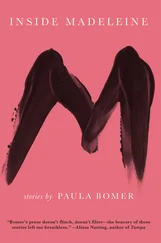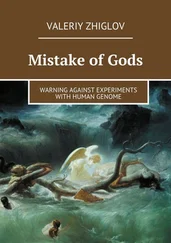IN THE GREAT DICTATOR ’S CLOSING SCENES, CHARLIE CHAPLIN’S timid Jewish barber is, through a complicated plot twist, mistaken for the film’s Hitler-like character, also played by Chaplin. Clad in a German military uniform, he finds himself standing before a microphone, expected to address a mammoth party rally. Instead of the rapid-fire invective the crowd anticipates, Chaplin delivers a homily about the resilience of the human spirit in the face of evil. He asks soldiers not to give themselves to “men who despise you, enslave you… treat you like cattle, use you as cannon fodder… unnatural men—machine men with machine minds and machine hearts. You are not machines! You are not cattle! You are men! You have the love of humanity in your hearts.
“Even now my voice is reaching millions throughout the world,” the humble barber tells the crowd, “millions of despairing men, women, and little children—victims of a system that makes men torture and imprison innocent people. To those who can hear me, I say—do not despair…. The hate of men will pass, and dictators die, and the power they took from the people will return to the people…. Liberty will never perish.”
Chaplin’s words are sentimental, maudlin, and naïve. I cannot listen to them without wanting to cheer.
Seven
Dictatorship of Democracy
JOSEPH STALIN CONDEMNED WITH RELISH THE REACTIONARY policies of Italian and German Fascists, but to a Communist, “Fascist” was the most versatile of insults. Rather than reserve the epithet for the real thing, Soviets used the F-word to discredit capitalists, nationalists, democrats, the religious, and any faction—whether Trotskyite, Socialist, or liberal—that did battle with the USSR for the hearts and minds of the left. In Stalin’s universe, you were either with him or no better than Hitler; there wasn’t any middle ground. One might think, therefore, that the two—Fascism and Communism—were opposites, but the contrast is more complicated.
In 1932, Mussolini described Fascism as a closed universe in which “the State is all-embracing,” and outside which “no human or spiritual values can exist.” In so doing, he acknowledged its overlap with Communism in its disdain for democracy and all its trappings. Publicly, Il Duce denounced Bolsheviks but in private he confessed his admiration for the effectiveness of Lenin’s brutal tactics. Both Fascism and Communism had utopian aspirations and both took hold amid the intellectual and social ferment of the late nineteenth century. Each purported to deliver a level of emotional sustenance that liberal political systems lacked.
However, there were also stark differences. The Nazis sorted humans based on nationality and race; to Communists, the key determinant was class. In Germany, Jews and Roma were persecuted; in the Soviet Union, the principal targets were landowners, the bourgeoisie, and only later the Jews. The Nazis perverted religion while exploiting the impulse for worship; the Communists shunned religion while treating certain secular texts as sacred. The Nazis seized control of state institutions; the Communists dismantled and then rebuilt them, replacing a slothful czarist bureaucracy with a lumbering and inefficient Soviet one. Each system had its ironies. The Nazis chased the dream of a racially pure society through occupation and conquest, thus ensuring intimate contact with people of many non-Germanic nationalities and races. The Communists insisted that national identity was irrelevant but obsessively persecuted men and women because of who they were: Latvians, Poles, Ukrainians, Armenians, Finns, Chechens, Koreans, and Turks.
As for the two leading men, Hitler, once in power, showed his indolent side, generally starting his day around noon and leaving the details of government to others. Stalin rose with the roosters, worked long hours, and demanded to be kept current on every development, whether economic, political, or military. Hitler was a teetotaler and vegetarian; Stalin drank plenty and ate omnivorously—his chefs, including Vladimir Putin’s grandfather, prepared the cuisine of the leader’s native Georgia: kebabs, stews, salads, dumplings, plenty of walnuts, and bread you could sink your hands into. Hitler preferred oral briefings; Stalin read detailed policy papers—and edited them.
For all their dissimilarities, the two men spoke a common language: violence. Both despised the Jeffersonian ideals of popular governance, reasoned debate, freedom of expression, an independent judiciary, and fair electoral competition. Both struck remorselessly at enemies within and outside their parties. In the 1920s, when the Nazis were still struggling to establish themselves, the Soviets implemented their revolution by forcibly reorganizing industry, sending millions of “class enemies” to Siberia, and triggering a horrendous famine through the collectivization of agriculture. In 1937, Stalin ordered the executions of 680,000 people judged politically unreliable, including military officers, party officials, and members of the politburo—an incredible number. The Communists, almost as much as the Nazis, knew how to turn the state into a fearsome killing machine.
Also like the Nazis, the Communists sought to shape the minds of citizens by overwhelming their senses with propagandistic spam. Each day, the men and women of the USSR were called on to sacrifice for the revolution, unite for a better tomorrow, and labor harder for the good of the whole. The hectoring was constant from billboards and radios, newspapers and party bosses; its purpose was to mold conformists who would do what the government demanded because they could no longer conceive of an alternative. Their mission, and they had no safe choice but to accept it, was to follow orders—to become human robots who equated obedience with virtue.
Communists and Nazis both thought it their calling to forge a “new man,” a creature of modernity who would rise above the individual quest for money, property, and pleasure that pitted workers against one another and, in their view, made of democracy a moral cesspool. In 1932, at a meeting hosted by the social realist writer Maxim Gorky, Stalin urged his country’s literary elite to be “engineers of human souls.” For their part, Soviet filmmakers churned out a thousand variations of the same story: a protagonist is forced by greedy capitalists to choose between self-interest and the well-being of the community. Invariably, the wrong choice leads to tragedy, and the correct one to comradely bliss.
The scenario’s attraction is readily apparent. The Bolsheviks—which translates as “the Majority”—won millions of converts, in part because of the stark inequities that persist in capitalist societies. The notion of giving everyone a seat in the same boat is appealing and seems fair. However, there is a reason the Communists had to apply such a heavy hand to put their theories into practice. Had their ideas been a better fit for real life, their campaign to indoctrinate wouldn’t have been so arduous and their gulags would have been unnecessary. Whatever might be the case in principle, the best farmers don’t like collective agriculture, because there’s nothing in it for them except more labor and less profit. In factories, the most productive workers won’t remain so unless rewarded for their efforts—and an occasional “employee of the month” ribbon isn’t enough. In any society, men and women with imagination will rebel at being told what to do, what to believe, and not to think.
A dictatorship by any other name is still a dictatorship, whether its symbol is the czarist two-headed eagle or the hammer and sickle. During World War II, the Red Army pressed into service millions of soldiers who loathed their commander in chief but still fought to defend Mother Russia against German Fascists. Soviet fact spinners later claimed that their troops had stormed into battle proclaiming their allegiance to Stalin, but that was nonsense. Communism doesn’t work.
Читать дальше
Конец ознакомительного отрывка
Купить книгу












